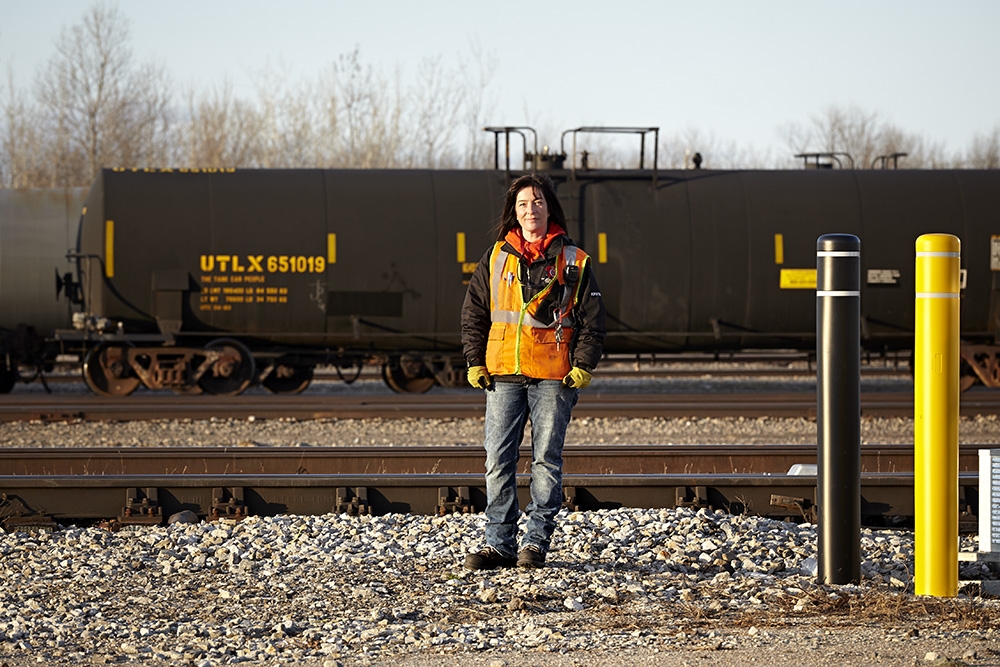Photo by Frederic Dekkal
Everything old is new again, and a new spirit of cooperation in negotiations between the Teamsters Canada Rail Conference (TCRC) union and two of Canada’s biggest railways, CN and VIA Rail, has the potential to use old-style sitting down and talking to change a century of adversarial posturing.
“As far as we know, none of the other big unions have tried this,” says TCRC president Rex Beatty. “The first step we’re proposing is that the parties to negotiations (such as at VIA and CN) not trigger the bargaining process as provided by the Canada Labour Code without first meeting to discuss the issues.”
This may not sound like a radical idea, because in many industries that’s how wages and terms are already set, but for union leaders to propose a forward-thinking approach in cooperation with the corporate owners is surprisingly new.
Why is this important and why now? In the past, a document called Notice to Bargain, had to be submitted, meaning that within a mere 15 days the parties had to reach a substantive agreement. This notice had to be provided some time within the 120 days prior to a contract’s end.
If agreement was not reached quickly the parties could go to the Canadian Industrial Relations Board for a decision.
But Beatty and other TCRC executive members realized the pressure of having only 15 days to reach an agreement about issues that may have simmered for years was not only unnecessarily adversarial, but also counterproductive in more ways than one.
The government (regardless of political stripe) and the public tend to consider most shipping by rail to be an essential service, meaning that striking railway workers can be legislated back to work. Because of this, a strike will not be allowed to go on too long.
It’s been a game of brinksmanship for a long time. “Our members don’t want to shut down the railroads, provided the issues can be addressed on an equal playing field. This is something we believe has been missing in past negotiations, but is essential to a successful outcome for both parties,” Beatty says. “So we’re suggesting two major changes.”
The first change is for both parties to meet for discussions on process and possible negotiations outside the Labour Code’s bargaining cycle (triggered by the Notice to Bargain). Either party can initiate this potential change within 120 days of the existing contract’s expiry. This way the 15-day mandatory period for entering into a Maintenance of Activities Agreement does not kick in.
The second change is more controversial. “We believe both parties want to avoid disrupting the lives of many people,” Beatty says. “So we’re proposing that we’ll keep working on reduced salary—for example starting at 10 per cent less. But the railroad has to give up 10 per cent of its earnings as well, with the reductions collected placed into a fund for charity.”
It is an innovative approach. This method of both parties having an equal sacrifice was used in Toronto during a dispute over GO Train workers’ contracts.
“The concept of working for reduced income was first initiated by the Union in 2006. Some of the collected funds were donated to institutions such as Toronto’s Sick Kids Hospital," says Beatty. “This gives both parties incentive to settle differences quickly, on a level playing field, without government involvement, and without slowing down the transportation of the country’s goods.”
Railroads are then assured they can still operate and retain customers, and railway workers are assured of employment. “At the same time,” says Beatty, “we’re being responsible to the needs of the general public and the country, and saving everyone a lot of time, money and aggravation.” It also avoids the problem any industry fears when customers have to find alternatives—some of those customers never come back.
The TCRC now has CN and VIA on board, and hopes to have other Canadian railways soon. The current method of arbitration picks a loser and a winner, and causes animosity between parties, but maybe that will now change. “VIA officials took a leap of faith and we reached an agreement within days. Then CN asked about the process at VIA and soon its Locomotive Engineers had a collective agreement, ratified by large numbers, before the expiration of their existing contract,” Beatty says. “Our proposal is an extension of that process.”
Sitting down and talking about issues without legally-binding deadline pressures, levelling the playing field regarding wins and losses in a dispute, and considering all parties’ needs—including the customers’—may not be revolutionary ideas, but they sure seem like a good place to start.

